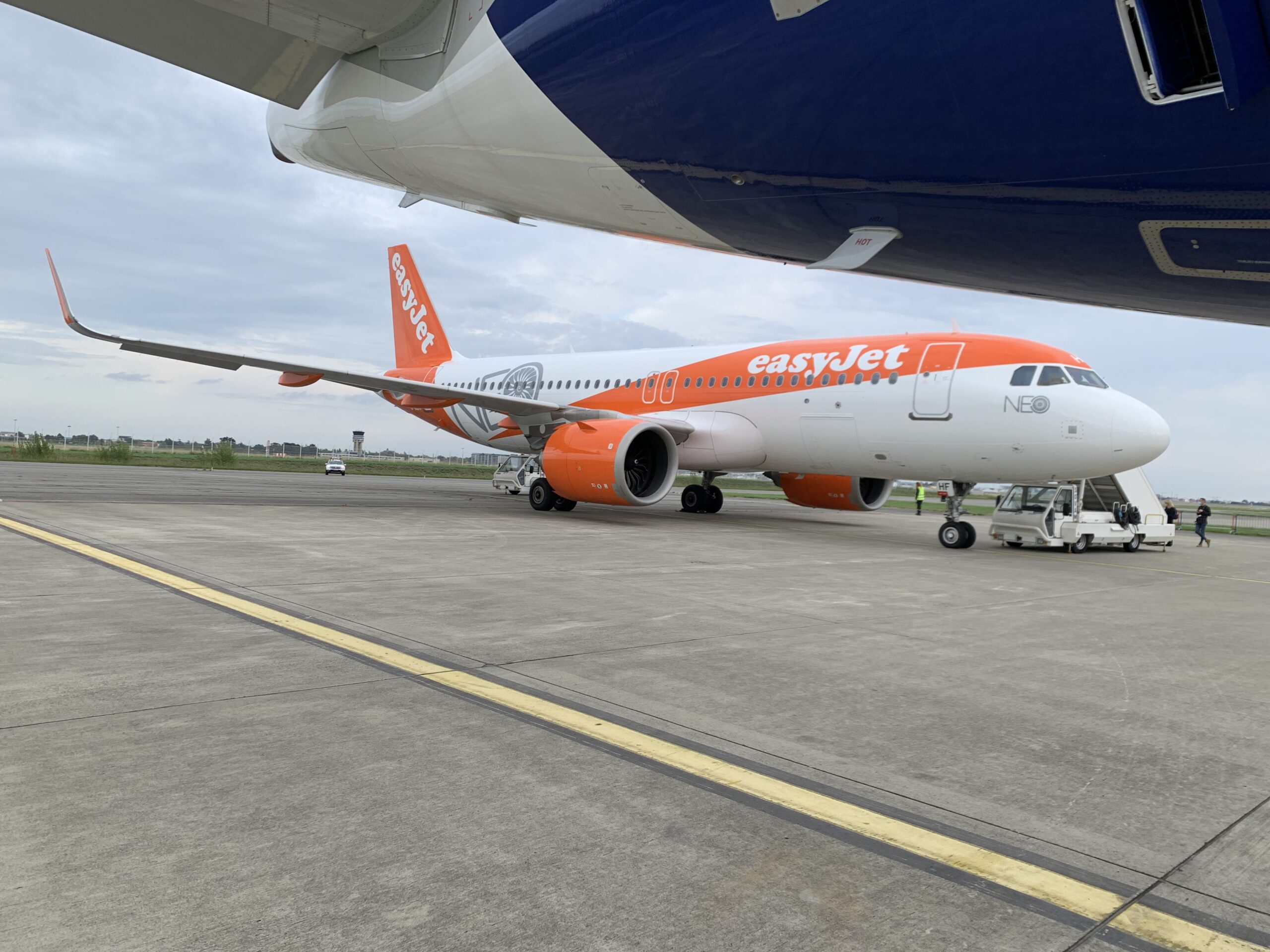
IMG 9242 scaled
It’s still too early days to specify the effect of the latest Omicron Covid-mutation, but if it remains limited, then UK low-cost airline easyjet expects to return to close to 2019 capacity levels by summer 2022. Demand for both the coming winter and even next summer are looking strong, which promises to make FY22 a better year than the heavy loss-making FY21. Without Omicron FY22 should be bright for easyjet.
On November 30, easyjet reported a £1.136 billion headline loss before tax, compared to £-835 million in the previous year. This result reflects the trading update of late September when the carrier said it expected a headline loss between £1.135 and £1.175 billion compared to the previous guidance of £-1.175 billion.
The main reason that FY21 has been worse than FY20 is that its financial year runs from September to October. This means that the first six months of FY20 (September 2019-March 2020) were unaffected by the pandemic, while FY21 was during all twelve months. The headline EBITDAR was £-551 million compared to £-273 million in FY20. Results include £26 million in non-headline charges related to hedge discontinuation.
Total revenues dropped by 51.6 percent to £1.458 billion from £3.009 billion. Passengers carried were down by even 57.5 percent to 20.4 million, whereas capacity in millions of seats was down by 48.9 percent to 28.2 million, reflecting the impact of travel restrictions. However, capacity was up from seventeen percent in Q3 to 58 percent in Q4 (July-September). While revenues per seat were down by 7 percent to £50.54, costs per seat increased by 31 percent to £90.41. With lower load factors, ancillary revenues were down by 35 percent to £458 million. The airline is projecting higher ancillary revenues after introducing new products for luggage this month and inflight retail from summer 2022.
The airline’s weekly cash burn was £36 million, better than the projected £40 million. Costs were reduced by £512 million, of almost half is structural. It reduced its net debt to £910 million from £1.125 billion and ended September with £4.4 billion in liquidity, which includes an undrawn revolving credit facility and part of the UKEF facility. After repaying £300 million in CCFF payroll support, easyjet has no debt maturities outstanding until FY23. Capital expenditures will increase from £900 million next year to £1.3 billion in FY24, reflecting new aircraft purchases.
Turning the page on its worst year
So with a restructured balance sheet and – for now – positive bookings, easyjet is trying to turn the page on its worst year ever and is looking ahead with optimism for FY22. To make this happen, the carrier is focusing on six strategic initiatives that should strengthen its position on the market. Part of this is its network strategy, for which the airline has reallocated 43 aircraft to bases where it expects higher returns and opened various seasonal bases like Malaga and Faro. In total, easyjet plans to increase its operational fleet by 25 aircraft next summer.
The spotlight will be on London Gatwick. After closing its bases at London Southend and Stansted, it has relocated part of its fleet to Gatwick where it will have 79 aircraft based next summer, with plans to add more capacity. This means Gatwick capacity will have grown by sixteen aircraft since the summer of 2019. In the UK, Manchester will see two more aircraft to bring its fleet there to twenty. In July, the carrier said that it was seeking available slots outside the UK as travel restrictions kept lowering demand.
Abroad, Milan is becoming more important. The airline has secured its winter slots there, while for summer 2022 it will base three extra aircraft at Malpensa to bring the fleet to 24. Paris Orly will have one more aircraft (sixteen in total), while securing additional slots in Porto and Lisbon (Portugal) will also grow the fleet there. More flights are planned from Amsterdam.
Purchase rights exercised on nineteen A320neo-family aircraft
With these growth plans in mind, easyjet will take another nineteen Airbus A320neo family between 2025 and 2028. Seven of these were originally options not taken up, but the carrier now will have them in 2025 and 2026. Another seven were purchase options that have been exercised for delivery in the same two fiscal years, while five purchase rights have been converted into firm orders for delivery in FY27. This brings easyjet’s outstanding order for Neo’s to 118 (102 A320neo, sixteen A321neo), with purchase rights left for 53 A320neo’s plus six purchase options for the same model. The airline has the flexibility to change models.
By the end of September, easyjet’s fleet comprised 308 aircraft compared to 342 a year earlier, the result of the redelivery of A319s. Of the 308, 125 are leased, with 58 part of a sale and leaseback since March 2020. Through lease extensions or returns, the carrier has the flexibility to grow its fleet to between 313 and 328 aircraft by FY24. The neo fleet will see eight deliveries in FY22, seven in FY23, and eighteen in FY24.
In its outlook for FY22, easyjet expects to return to 65 percent capacity during the current Q1 (October-December) and seventy percent in Q2 compared to 2019 levels. A full recovery of capacity to pre-pandemic levels is foreseen for Q4 FY22 or July-September. Strong demand is reported for the Canary Islands, Greece, Turkey, and notably Egypt, which translates to huge capacity increases (Egypt +675 percent). It isn’t giving any financial guidance for FY22 but plans for mid-teen EBITDAR margins in the medium term and growing capacity to pre-pandemic levels in 2023. Without a prolonged impact of Covid-19 resulting in the grounding of its fleet, easyjet can meet all its liabilities up to September 2024.
Views: 2




